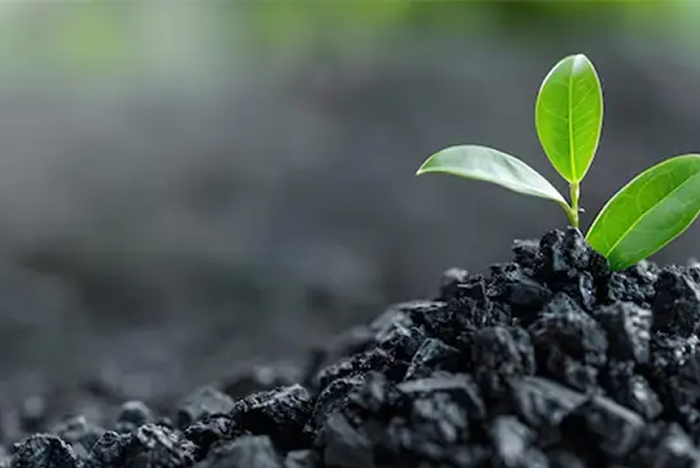What are the 17 Sustainable Development Goals (SDGs)?
What are the Sustainable Development Goals?
The Sustainable Development Goals (SDGs) are a universal call-to-action to end poverty, protect the planet, and ensure that all people enjoy peace and prosperity.
There are 17 Sustainable Development Goals and they have been built on the successes of the Millennium Development Goals while including new areas such as climate change, economic inequality, innovation, sustainable consumption, peace, and justice, among other priorities. The goals are interconnected.
The Sustainable Development Goals (SDGs) are the path to achieving a better and more sustainable future for all. They address the global challenges we face daily, including poverty, inequality, climate, environmental degradation, prosperity, and peace and justice—the international community plan to achieve these Goals before 2030.
What is the role of the United Nations (UN)?
The SDGs came into effect in January 2016 and will continue to guide UNDP policy and funding until 2030. As the lead UN development agency, UNDP is strategically placed to help implement the Goals through its work in 170 countries and territories.
The UNDP's plan focuses on key areas, including poverty alleviation, democratic governance and peacebuilding, climate change and disaster risk, and economic inequality. The UNDP supports governments in integrating the SDGs into national development plans and policies.
In order to achieve the Sustainable Development Goals, governments, private sector actors, civil society, and citizens need to collaborate.
The 17 Sustainable Development Goals (SDGs)
Goal 1 - No Poverty: End poverty in all its forms everywhere by ensuring equal access to resources, opportunities, and basic services for all people, particularly the most vulnerable.
Goal 2 - Zero Hunger: End hunger and ensure food security by promoting sustainable agriculture, improving nutrition, and supporting small-scale farmers to build resilient food systems.
Goal 3 - Good Health and Well-being: Ensure healthy lives and promote well-being for all at all ages by providing universal access to quality healthcare, reducing mortality, and tackling global health risks.
Goal 4 - Quality Education: Ensure inclusive and equitable quality education and promote lifelong learning opportunities for all, enabling people to acquire the knowledge and skills needed for sustainable development.
Goal 5 - Gender Equality: Achieve gender equality and empower all women and girls by eliminating discrimination, violence, and harmful practices while promoting equal opportunities in leadership and decision-making.
Goal 6 - Clean Water and Sanitation: Ensure availability and sustainable management of water and sanitation for all through improved infrastructure, efficient water use, and protection of freshwater ecosystems.
Goal 7 - Affordable and Clean Energy: Ensure access to affordable, reliable, sustainable, and modern energy for all by expanding renewable energy sources and improving energy efficiency worldwide.
Goal 8 - Decent Work and Economic Growth: Promote sustained, inclusive, and sustainable economic growth, full and productive employment, and decent work for all, ensuring that progress benefits people and the planet.
Goal 9 - Industry, Innovation, and Infrastructure: Build resilient infrastructure, promote inclusive and sustainable industrialization, and foster innovation to support economic development and human well-being.
Goal 10 - Reduced Inequality: Reduce inequality within and among countries by empowering and promoting the social, economic, and political inclusion of all people, regardless of age, gender, or background.
Goal 11 - Sustainable Cities and Communities: Make cities and human settlements inclusive, safe, resilient, and sustainable by improving urban planning, affordable housing, and access to green public spaces.
Goal 12 - Responsible Consumption and Production: Ensure sustainable consumption and production patterns by reducing waste, promoting resource efficiency, and encouraging responsible business practices.
Goal 13 - Climate Action: Take urgent action to combat climate change and its impacts by strengthening resilience, reducing emissions, and integrating climate measures into policies and planning.
Goal 14 - Life Below Water: Conserve and sustainably use the oceans, seas, and marine resources for sustainable development by addressing pollution, protecting ecosystems, and supporting sustainable fisheries.
Goal 15 - Life on Land: Protect, restore, and promote sustainable use of terrestrial ecosystems; sustainably manage forests; combat desertification; and halt and reverse land degradation and biodiversity loss.
Goal 16 - Peace and Justice Strong Institutions: Promote peaceful and inclusive societies, provide access to justice for all, and build effective, accountable, and transparent institutions at all levels.
Goal 17 - Partnerships for the Goals: Strengthen the means of implementation and revitalize the global partnership for sustainable development through cooperation among governments, the private sector, and civil society.
The Sustainable Development Goals aim to promote human rights and the preservation of the environment in the long term. To reach these goals, we must combine the contribution of individuals, the support of governments with the help of funding, and indicators measuring the SDGs transparently.
ClimateSeed carbon removal and avoidance projects portfolio, in line with SDGs
With the planet facing an accelerating climate crisis, urgent action is needed to fund initiatives that sequester and avoid carbon emissions. ClimateSeed offers a portfolio of carbon removal and avoidance projects though a strong network and via a digital platform to manage the carbon contribution process.

Our approach to carbon contribution (old carbon offsetting) is driven by rigor and science to maximize positive social and environmental impact and avoid unintentional greenwashing and reputational risks. Each of our projects focuses on specific SDGs. If you would like to discover and contribute to any of our projects, do not hesitate to contact us.
About ClimateSeed
ClimateSeed is a company committed to climate action, helping organizations take action both within their value chain and beyond.
Supported by AXA Investment Managers' impact fund, it is the trusted partner of organizations wishing to contribute to global carbon neutrality. ClimateSeed offers two services:
- Measurement and reduction of carbon footprint: Thanks to the GEMS digital platform and the expertise of its consultants, ClimateSeed facilitates data collection, collaboration and automated calculations according to recognized standards (GHG Protocol, Carbon Footprint®, ISO 14064). This makes it possible to develop reduction strategies in line with science-based targets (SBTi).
- Contribution to carbon sequestration and avoidance projects: ClimateSeed supports participation in projects generating carbon credits, guaranteeing traceability, transparency, and risk mitigation, in line with the Sustainable Development Goals (SDGs) created by the UN.

Since 2018, ClimateSeed has supported more than 200 organizations in their decarbonization and continues its international development to maximize its impact.
Do not hesitate to contact us to explore how ClimateSeed can help you implement specific strategies for your company.
Sources: https://sdgs.un.org/goals
FAQs
Carbon credits are divided into two main categories:
- Compliance credits (or emission allowances)
- Voluntary carbon credits
For more information, please read our blog.
Biochar has emerged as a powerful waste-to-carbon technology. Produced through pyrolysis by heating biomass in low-oxygen environments, biochar - unlike charcoal made for combustion- transforms organic waste into a stable form of carbon with multiple environmental co-benefits.
In the context of waste management, it offers a unique value proposition: divert waste, sequester carbon, and regenerate soils.
For more information on how this integrates into the carbon market, please read our blog.
Carbon capture (or Carbon Capture and Storage, also known as CCS) is a technological process designed to reduce CO2 emissions into the atmosphere. In the face of the climate emergency, carbon capture is seen as a key technological solution to limit greenhouse gas emissions (GHGs) responsible for global warming.
The goal is simple: to intercept carbon dioxide (CO2) emitted by industries or captured directly from the air before it escapes into the atmosphere.
For more information, please read our blog.
Share this
You May Also Like
These Related Stories

The Role of Biochar Beyond Nature-based Solutions

Why include waste management projects into your carbon portfolio?


